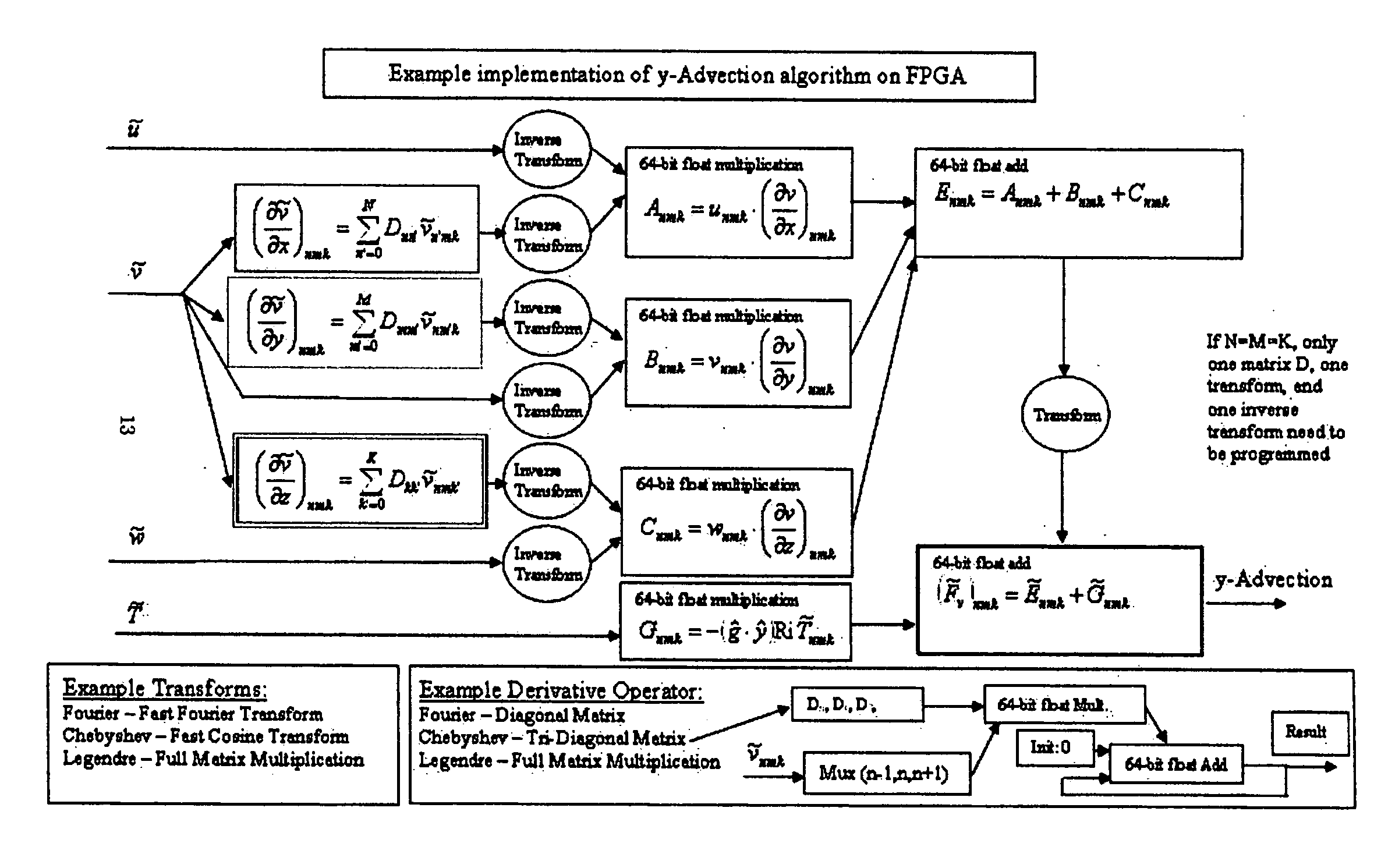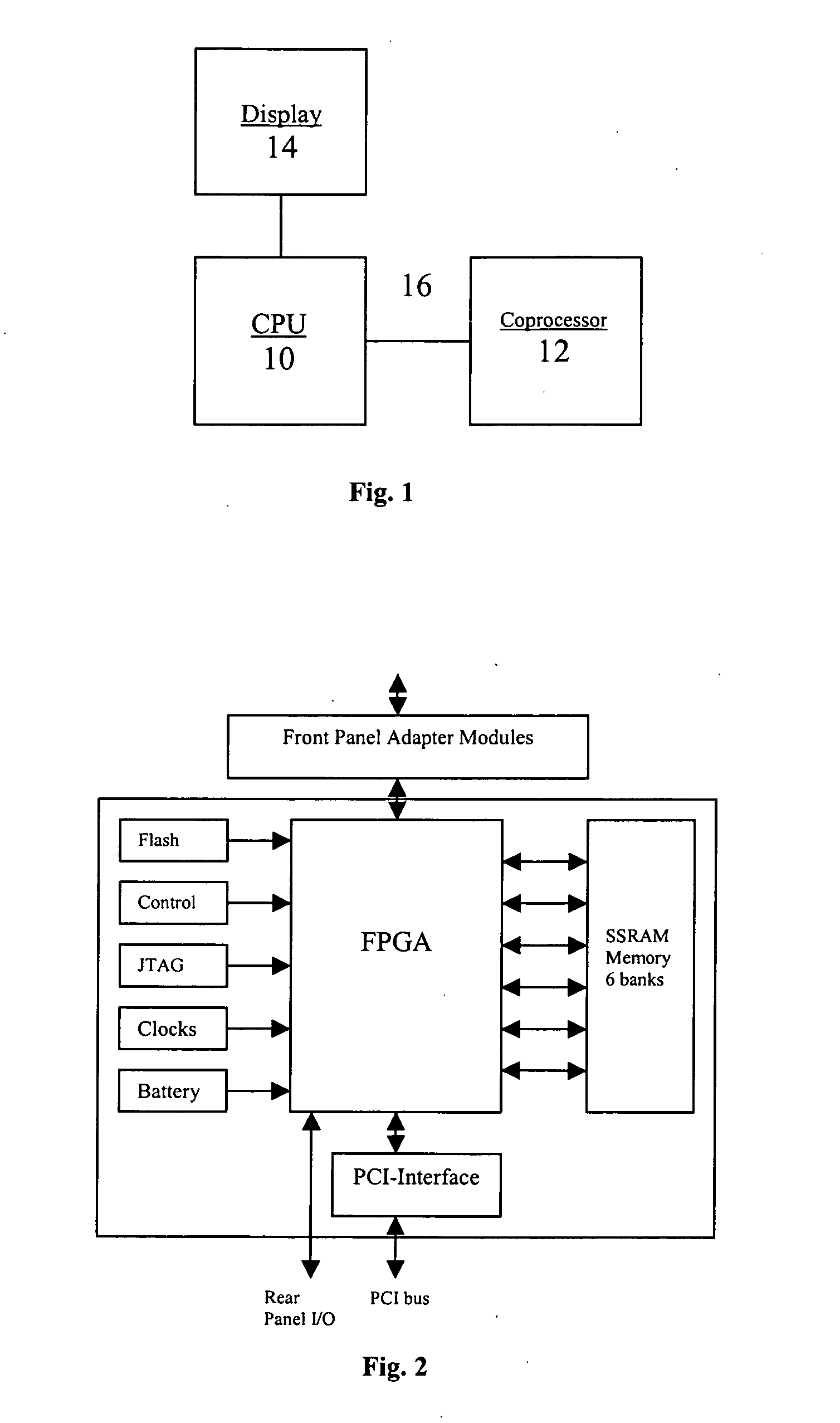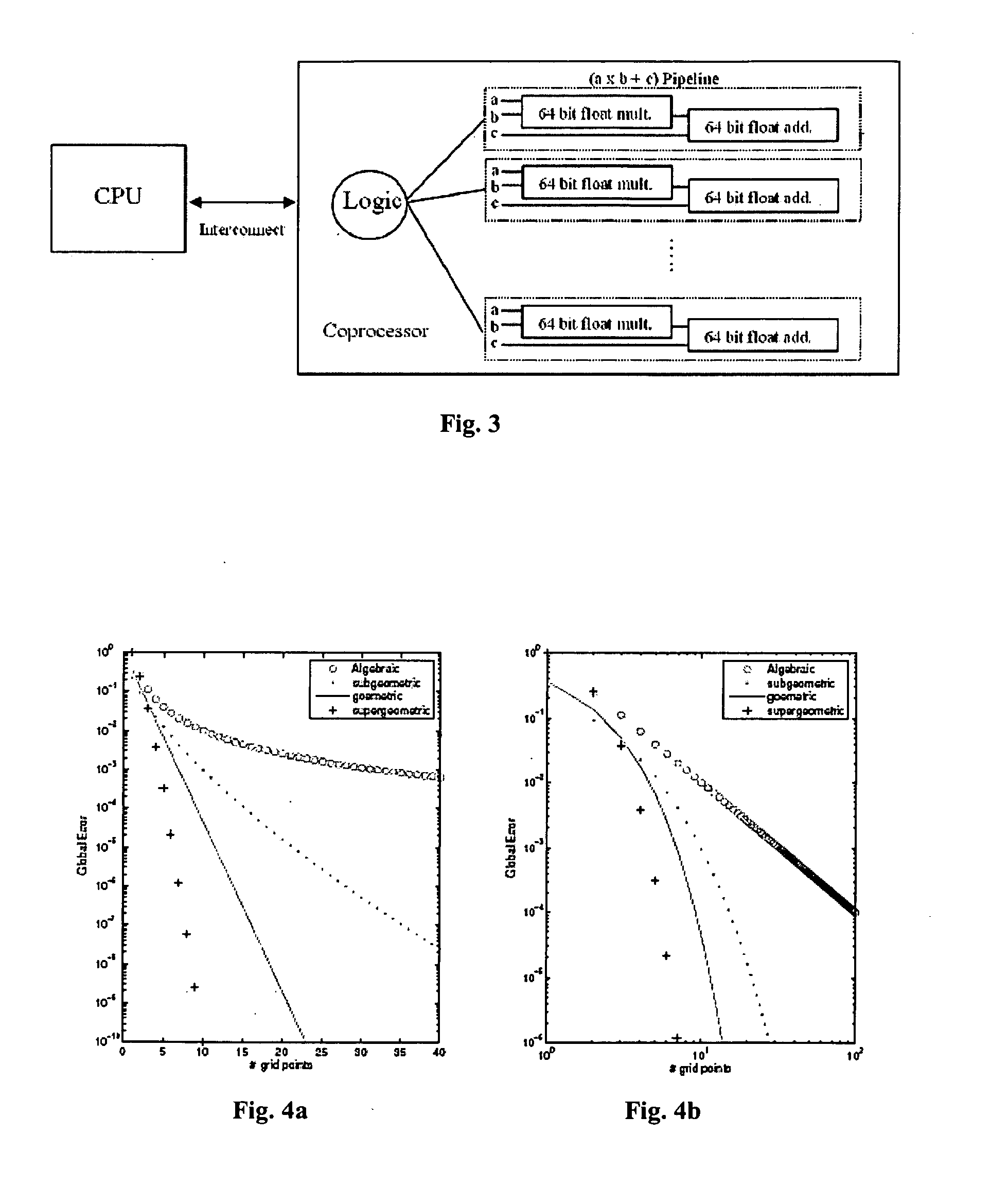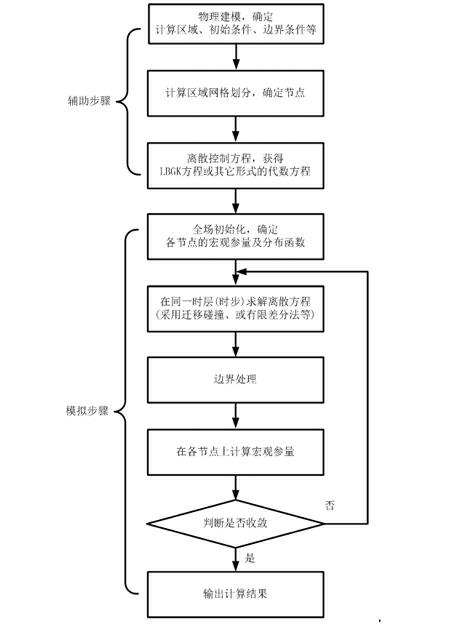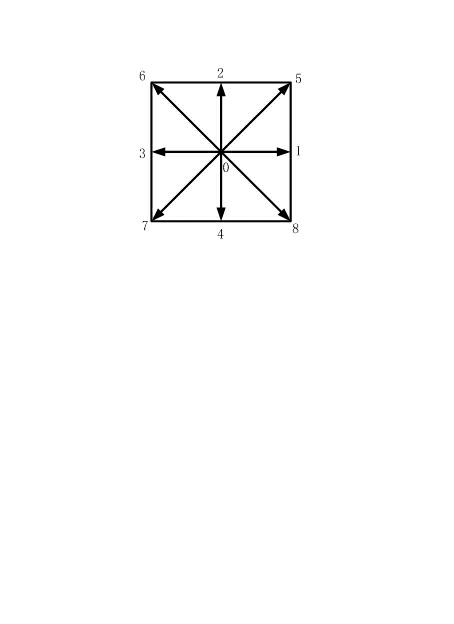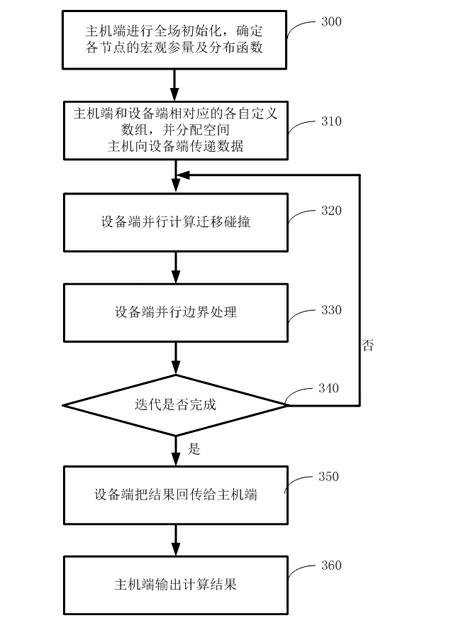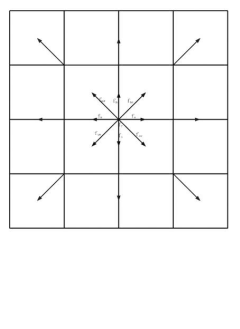How to Accelerate Computational Fluid Dynamics with Laminar Flow?
JUL 10, 20259 MIN READ
Generate Your Research Report Instantly with AI Agent
Patsnap Eureka helps you evaluate technical feasibility & market potential.
CFD Laminar Flow Acceleration Background
Computational Fluid Dynamics (CFD) has revolutionized the way engineers and scientists study fluid flow phenomena. The acceleration of CFD simulations, particularly for laminar flow scenarios, has been a focal point of research and development in recent years. Laminar flow, characterized by smooth and predictable fluid motion, is a fundamental concept in fluid dynamics and plays a crucial role in various engineering applications.
The evolution of CFD techniques for laminar flow acceleration can be traced back to the early days of computational methods in fluid dynamics. Initially, simulations were limited by computational power and relied on simplified models. As technology advanced, more sophisticated algorithms and numerical methods emerged, enabling more accurate and efficient simulations of laminar flow phenomena.
The drive to accelerate CFD simulations for laminar flow stems from the need to reduce computational time and resources while maintaining or improving accuracy. This push has been fueled by industries such as aerospace, automotive, and chemical engineering, where rapid design iterations and optimization are critical for product development and process improvement.
Key milestones in the acceleration of CFD for laminar flow include the development of parallel computing techniques, adaptive mesh refinement methods, and the integration of machine learning algorithms. These advancements have significantly reduced simulation times and improved the fidelity of results, allowing engineers to tackle more complex problems and explore larger design spaces.
The current landscape of CFD acceleration for laminar flow is characterized by a blend of traditional numerical methods and cutting-edge technologies. High-performance computing clusters, GPU acceleration, and cloud-based solutions have become integral to modern CFD workflows. Additionally, the emergence of reduced-order modeling techniques has opened new avenues for real-time simulations and design optimization.
As the field continues to evolve, researchers and developers are exploring novel approaches to further accelerate CFD simulations for laminar flow. These include the development of hybrid methods that combine the strengths of different numerical schemes, the application of artificial intelligence to predict flow patterns, and the integration of CFD with other simulation disciplines for multi-physics analyses.
The acceleration of CFD for laminar flow is not only about speed but also about enhancing the overall simulation process. This includes improvements in pre-processing, solver efficiency, and post-processing capabilities. The ultimate goal is to create a seamless workflow that allows engineers to rapidly iterate designs and gain deeper insights into fluid behavior.
The evolution of CFD techniques for laminar flow acceleration can be traced back to the early days of computational methods in fluid dynamics. Initially, simulations were limited by computational power and relied on simplified models. As technology advanced, more sophisticated algorithms and numerical methods emerged, enabling more accurate and efficient simulations of laminar flow phenomena.
The drive to accelerate CFD simulations for laminar flow stems from the need to reduce computational time and resources while maintaining or improving accuracy. This push has been fueled by industries such as aerospace, automotive, and chemical engineering, where rapid design iterations and optimization are critical for product development and process improvement.
Key milestones in the acceleration of CFD for laminar flow include the development of parallel computing techniques, adaptive mesh refinement methods, and the integration of machine learning algorithms. These advancements have significantly reduced simulation times and improved the fidelity of results, allowing engineers to tackle more complex problems and explore larger design spaces.
The current landscape of CFD acceleration for laminar flow is characterized by a blend of traditional numerical methods and cutting-edge technologies. High-performance computing clusters, GPU acceleration, and cloud-based solutions have become integral to modern CFD workflows. Additionally, the emergence of reduced-order modeling techniques has opened new avenues for real-time simulations and design optimization.
As the field continues to evolve, researchers and developers are exploring novel approaches to further accelerate CFD simulations for laminar flow. These include the development of hybrid methods that combine the strengths of different numerical schemes, the application of artificial intelligence to predict flow patterns, and the integration of CFD with other simulation disciplines for multi-physics analyses.
The acceleration of CFD for laminar flow is not only about speed but also about enhancing the overall simulation process. This includes improvements in pre-processing, solver efficiency, and post-processing capabilities. The ultimate goal is to create a seamless workflow that allows engineers to rapidly iterate designs and gain deeper insights into fluid behavior.
Market Demand for Fast CFD Simulations
The market demand for fast Computational Fluid Dynamics (CFD) simulations, particularly in laminar flow scenarios, has been steadily increasing across various industries. This surge is driven by the need for more efficient product development cycles, cost reduction in prototyping, and the ability to make data-driven decisions quickly.
In the automotive sector, manufacturers are seeking faster CFD simulations to optimize vehicle aerodynamics, reducing drag and improving fuel efficiency. The push towards electric vehicles has further intensified this demand, as range optimization becomes crucial. Similarly, the aerospace industry requires rapid CFD simulations for aircraft design, especially in areas like wing shape optimization and engine nacelle integration.
The energy sector, particularly in renewable energy, has shown a growing interest in fast CFD simulations. Wind turbine manufacturers use these simulations to optimize blade designs, while solar panel producers utilize them to enhance heat dissipation in photovoltaic cells. The oil and gas industry also benefits from accelerated CFD simulations in pipeline design and reservoir modeling.
In the biomedical field, the demand for fast CFD simulations has risen significantly. Researchers and medical device manufacturers use these simulations to study blood flow in artificial heart valves, optimize drug delivery systems, and design more effective respiratory devices. The recent global health challenges have further highlighted the importance of rapid CFD simulations in understanding airflow patterns and droplet dispersion in indoor environments.
The consumer goods industry has also recognized the value of fast CFD simulations. Companies developing products ranging from household appliances to sports equipment are utilizing these simulations to improve product performance and energy efficiency. For instance, HVAC manufacturers use CFD to optimize air circulation in buildings, while sports equipment designers employ it to reduce drag in cycling helmets and swimwear.
The increasing complexity of modern engineering problems, coupled with the need for faster time-to-market, has created a strong demand for accelerated CFD simulations. Companies are looking for solutions that can provide accurate results in shorter timeframes, allowing for more design iterations and optimization cycles. This demand is not only for faster hardware but also for more efficient algorithms and software solutions that can handle laminar flow simulations with greater speed and accuracy.
As industries continue to embrace digital twins and virtual prototyping, the market for fast CFD simulations is expected to grow further. The ability to quickly simulate and analyze laminar flow scenarios is becoming a competitive advantage, driving innovation and efficiency across multiple sectors.
In the automotive sector, manufacturers are seeking faster CFD simulations to optimize vehicle aerodynamics, reducing drag and improving fuel efficiency. The push towards electric vehicles has further intensified this demand, as range optimization becomes crucial. Similarly, the aerospace industry requires rapid CFD simulations for aircraft design, especially in areas like wing shape optimization and engine nacelle integration.
The energy sector, particularly in renewable energy, has shown a growing interest in fast CFD simulations. Wind turbine manufacturers use these simulations to optimize blade designs, while solar panel producers utilize them to enhance heat dissipation in photovoltaic cells. The oil and gas industry also benefits from accelerated CFD simulations in pipeline design and reservoir modeling.
In the biomedical field, the demand for fast CFD simulations has risen significantly. Researchers and medical device manufacturers use these simulations to study blood flow in artificial heart valves, optimize drug delivery systems, and design more effective respiratory devices. The recent global health challenges have further highlighted the importance of rapid CFD simulations in understanding airflow patterns and droplet dispersion in indoor environments.
The consumer goods industry has also recognized the value of fast CFD simulations. Companies developing products ranging from household appliances to sports equipment are utilizing these simulations to improve product performance and energy efficiency. For instance, HVAC manufacturers use CFD to optimize air circulation in buildings, while sports equipment designers employ it to reduce drag in cycling helmets and swimwear.
The increasing complexity of modern engineering problems, coupled with the need for faster time-to-market, has created a strong demand for accelerated CFD simulations. Companies are looking for solutions that can provide accurate results in shorter timeframes, allowing for more design iterations and optimization cycles. This demand is not only for faster hardware but also for more efficient algorithms and software solutions that can handle laminar flow simulations with greater speed and accuracy.
As industries continue to embrace digital twins and virtual prototyping, the market for fast CFD simulations is expected to grow further. The ability to quickly simulate and analyze laminar flow scenarios is becoming a competitive advantage, driving innovation and efficiency across multiple sectors.
Current CFD Laminar Flow Challenges
Computational Fluid Dynamics (CFD) with laminar flow faces several significant challenges that hinder its acceleration and widespread application. One of the primary obstacles is the computational intensity required for solving the Navier-Stokes equations, particularly in complex geometries or multi-phase flows. This demand for high computational resources often leads to prolonged simulation times, limiting the feasibility of real-time analysis and design iterations.
Another challenge lies in the accurate representation of boundary conditions, especially in scenarios involving moving boundaries or fluid-structure interactions. The precise modeling of these conditions is crucial for obtaining reliable results but often introduces additional computational complexity. This complexity is further exacerbated when dealing with multi-scale phenomena, where both large-scale flow structures and small-scale boundary layer effects need to be captured simultaneously.
The issue of numerical stability presents another significant hurdle. Laminar flow simulations, particularly at high Reynolds numbers or in geometries with sudden expansions or contractions, can be prone to numerical instabilities. These instabilities may lead to divergence in the solution or require extremely fine mesh resolutions, further increasing computational demands.
Data management and visualization pose additional challenges. As the resolution and complexity of simulations increase, the volume of generated data grows exponentially. Efficiently storing, processing, and visualizing this data becomes a non-trivial task, often requiring specialized hardware and software solutions.
The development of robust and efficient numerical schemes remains an ongoing challenge. While various methods such as finite difference, finite volume, and finite element have been developed, each comes with its own set of limitations in terms of accuracy, stability, and computational efficiency. Balancing these factors to achieve optimal performance across a wide range of flow conditions is a persistent challenge in CFD.
Validation and verification of CFD results for laminar flow simulations also present significant challenges. The lack of comprehensive experimental data for complex flow scenarios often makes it difficult to assess the accuracy of numerical predictions. This is particularly problematic in emerging applications such as microfluidics or biomedical flows, where experimental measurements may be limited or challenging to obtain.
Lastly, the integration of CFD with other disciplines, such as heat transfer, chemical reactions, or structural mechanics, introduces additional layers of complexity. Coupling these multi-physics phenomena in a computationally efficient manner while maintaining accuracy across all involved domains remains a significant challenge in the field of CFD for laminar flow simulations.
Another challenge lies in the accurate representation of boundary conditions, especially in scenarios involving moving boundaries or fluid-structure interactions. The precise modeling of these conditions is crucial for obtaining reliable results but often introduces additional computational complexity. This complexity is further exacerbated when dealing with multi-scale phenomena, where both large-scale flow structures and small-scale boundary layer effects need to be captured simultaneously.
The issue of numerical stability presents another significant hurdle. Laminar flow simulations, particularly at high Reynolds numbers or in geometries with sudden expansions or contractions, can be prone to numerical instabilities. These instabilities may lead to divergence in the solution or require extremely fine mesh resolutions, further increasing computational demands.
Data management and visualization pose additional challenges. As the resolution and complexity of simulations increase, the volume of generated data grows exponentially. Efficiently storing, processing, and visualizing this data becomes a non-trivial task, often requiring specialized hardware and software solutions.
The development of robust and efficient numerical schemes remains an ongoing challenge. While various methods such as finite difference, finite volume, and finite element have been developed, each comes with its own set of limitations in terms of accuracy, stability, and computational efficiency. Balancing these factors to achieve optimal performance across a wide range of flow conditions is a persistent challenge in CFD.
Validation and verification of CFD results for laminar flow simulations also present significant challenges. The lack of comprehensive experimental data for complex flow scenarios often makes it difficult to assess the accuracy of numerical predictions. This is particularly problematic in emerging applications such as microfluidics or biomedical flows, where experimental measurements may be limited or challenging to obtain.
Lastly, the integration of CFD with other disciplines, such as heat transfer, chemical reactions, or structural mechanics, introduces additional layers of complexity. Coupling these multi-physics phenomena in a computationally efficient manner while maintaining accuracy across all involved domains remains a significant challenge in the field of CFD for laminar flow simulations.
Existing CFD Acceleration Solutions
01 Hardware acceleration for CFD simulations
Utilizing specialized hardware such as GPUs, FPGAs, or custom processors to accelerate computational fluid dynamics calculations. This approach can significantly reduce simulation time by leveraging parallel processing capabilities and optimized architectures for fluid dynamics algorithms.- Hardware acceleration for CFD simulations: Utilizing specialized hardware such as GPUs, FPGAs, or custom processors to accelerate computational fluid dynamics calculations. This approach leverages parallel processing capabilities to significantly reduce simulation time and improve overall performance.
- Optimized algorithms for CFD acceleration: Developing and implementing advanced algorithms specifically designed to enhance the efficiency of CFD simulations. These algorithms focus on improving numerical methods, reducing computational complexity, and optimizing data structures to achieve faster results without compromising accuracy.
- Machine learning techniques for CFD acceleration: Incorporating machine learning and artificial intelligence methods to accelerate CFD simulations. This approach involves training models on existing simulation data to predict fluid behavior, reducing the need for full-scale simulations in certain scenarios and speeding up overall analysis time.
- Distributed computing for large-scale CFD simulations: Leveraging distributed computing architectures to parallelize CFD simulations across multiple nodes or clusters. This approach enables the handling of larger and more complex fluid dynamics problems by distributing the computational load, resulting in faster simulation times for extensive models.
- Real-time CFD acceleration for interactive applications: Developing techniques to enable real-time or near-real-time CFD simulations for interactive applications such as virtual reality, gaming, or rapid design iterations. This involves simplifying models, using adaptive mesh refinement, and implementing efficient data streaming methods to achieve fast updates while maintaining acceptable accuracy.
02 Mesh optimization and adaptive refinement
Implementing advanced meshing techniques that dynamically adjust the grid resolution based on flow features or solution gradients. This method focuses on optimizing computational resources by refining the mesh only where necessary, thereby improving accuracy and reducing overall simulation time.Expand Specific Solutions03 Machine learning-based CFD acceleration
Incorporating machine learning algorithms to predict flow patterns, turbulence models, or solution parameters. This approach can speed up simulations by reducing the number of iterations required or by providing intelligent initial conditions for complex flow problems.Expand Specific Solutions04 Parallel computing and load balancing strategies
Developing efficient parallel computing algorithms and load balancing techniques for distributed CFD simulations. This includes optimizing domain decomposition, inter-process communication, and workload distribution across multiple computing nodes or cores.Expand Specific Solutions05 Reduced-order modeling for real-time CFD
Creating simplified models that capture the essential physics of complex fluid systems while significantly reducing computational complexity. These models enable real-time or near-real-time CFD simulations for applications such as design optimization or control systems.Expand Specific Solutions
Key Players in CFD Software Industry
The computational fluid dynamics (CFD) market for laminar flow acceleration is in a growth phase, with increasing demand driven by industries such as aerospace, automotive, and energy. The market size is expanding as more companies adopt CFD solutions to optimize product design and reduce development costs. Technologically, the field is advancing rapidly, with key players like Dassault Systèmes, Siemens, and Robert Bosch GmbH leading innovation. Academic institutions such as Xi'an Jiaotong University and Beihang University are contributing to research and development. The technology is maturing, with a focus on improving simulation accuracy and computational efficiency through advanced algorithms and hardware acceleration techniques.
Dassault Systèmes Americas Corp.
Technical Solution: Dassault Systèmes has developed advanced Computational Fluid Dynamics (CFD) solutions to accelerate laminar flow simulations. Their SIMULIA PowerFLOW software utilizes a lattice Boltzmann-based approach, which is particularly efficient for laminar flow scenarios[1]. This method discretizes the fluid domain into a lattice of cells, allowing for parallel processing and improved computational speed. The company has also implemented adaptive mesh refinement techniques, automatically adjusting the grid resolution in areas of complex flow, thereby optimizing computational resources[2]. Additionally, Dassault's software leverages GPU acceleration, enabling up to 5x faster solve times for laminar flow simulations compared to traditional CPU-based methods[3].
Strengths: Highly optimized for parallel processing, efficient lattice Boltzmann method for laminar flows, adaptive mesh refinement. Weaknesses: May require specialized hardware for optimal performance, potential learning curve for users transitioning from traditional CFD methods.
Robert Bosch GmbH
Technical Solution: Bosch has developed proprietary CFD acceleration techniques focusing on automotive and industrial applications, including laminar flow scenarios. Their approach combines hardware and software optimizations. On the hardware side, Bosch utilizes custom-designed FPGA (Field-Programmable Gate Array) accelerators that are specifically tailored for CFD computations, including those involving laminar flow[7]. These FPGAs can achieve up to 10x speedup for certain laminar flow calculations compared to general-purpose CPUs. On the software side, Bosch has implemented a novel domain decomposition method that efficiently partitions the computational domain for laminar flow problems, allowing for better load balancing in parallel computations[8]. They have also developed a specialized preconditioner for laminar flow equations, which significantly improves the convergence rate of iterative solvers.
Strengths: Custom hardware acceleration, efficient domain decomposition for parallel computing, specialized preconditioners for laminar flow. Weaknesses: Hardware solutions may be less flexible than pure software approaches, potential compatibility issues with third-party CFD software.
Core Innovations in CFD Algorithms
Computational fluid dynamics (CFD) coprocessor-enhanced system and method
PatentInactiveUS20070219766A1
Innovation
- A system comprising a Central Processing Unit (CPU) in communication with a dedicated coprocessor over a high-speed interconnect, where computationally intensive calculations are ported to the coprocessor for acceleration, using spectral methods to transform equations into spectral space for efficient processing, and inverse transformations to yield results in physical space, potentially using Field Programmable Gate Arrays (FPGAs) for reconfigurable computing.
Method for accelerating lattice-Boltzmann by utilizing graphic processing units (GPUs)
PatentInactiveCN102681972A
Innovation
- By using CUDA technology to parallelize the equilibrium distribution function calculation, macroscopic quantity statistics, discrete equation solving and boundary processing, they can be executed in parallel on the GPU side to achieve collaborative computing between the CPU and GPU. The specific steps include analysis of performance bottlenecks, design Threading model, writing GPU kernel code, parallelizing migration and collision process.
Hardware Acceleration for CFD
Hardware acceleration has become a crucial factor in advancing Computational Fluid Dynamics (CFD) simulations, particularly for laminar flow scenarios. The increasing complexity of fluid dynamics models and the demand for faster, more accurate results have driven the development of specialized hardware solutions. Graphics Processing Units (GPUs) have emerged as a primary accelerator for CFD computations, offering massive parallelism that aligns well with the inherent parallelizable nature of fluid dynamics calculations.
GPUs excel at handling the large matrices and vector operations common in CFD simulations. Their architecture, originally designed for rendering graphics, proves highly efficient for the floating-point operations prevalent in fluid dynamics algorithms. Modern GPUs can contain thousands of cores, allowing for simultaneous processing of multiple grid points in a CFD simulation. This parallelism significantly reduces computation time, especially for large-scale simulations of laminar flow.
Field-Programmable Gate Arrays (FPGAs) represent another hardware acceleration option for CFD. These reconfigurable circuits can be optimized for specific CFD algorithms, offering a balance between performance and energy efficiency. FPGAs are particularly useful for real-time CFD applications, where low latency is critical. Their ability to implement custom data paths and pipelines can lead to substantial speedups in certain CFD calculations.
Application-Specific Integrated Circuits (ASICs) designed explicitly for CFD computations offer the highest potential for performance gains. While less flexible than GPUs or FPGAs, ASICs can achieve unparalleled efficiency for specific CFD tasks. However, their development costs and lack of versatility limit their widespread adoption to specialized high-performance computing environments.
The integration of these hardware accelerators into CFD workflows requires careful consideration of data transfer bottlenecks. High-bandwidth memory interfaces and efficient data movement strategies are essential to fully leverage the computational power of accelerators. Additionally, the development of CFD software that can effectively utilize these hardware resources is crucial. This includes optimizing algorithms for parallel execution and developing new numerical methods that align with the strengths of specific hardware architectures.
As hardware acceleration technologies continue to evolve, we can expect further advancements in CFD simulation capabilities. The trend towards heterogeneous computing, combining different types of processors and accelerators, promises to offer even greater performance gains for laminar flow simulations in the future. This hardware-driven acceleration of CFD will enable more complex and accurate simulations, pushing the boundaries of fluid dynamics research and engineering applications.
GPUs excel at handling the large matrices and vector operations common in CFD simulations. Their architecture, originally designed for rendering graphics, proves highly efficient for the floating-point operations prevalent in fluid dynamics algorithms. Modern GPUs can contain thousands of cores, allowing for simultaneous processing of multiple grid points in a CFD simulation. This parallelism significantly reduces computation time, especially for large-scale simulations of laminar flow.
Field-Programmable Gate Arrays (FPGAs) represent another hardware acceleration option for CFD. These reconfigurable circuits can be optimized for specific CFD algorithms, offering a balance between performance and energy efficiency. FPGAs are particularly useful for real-time CFD applications, where low latency is critical. Their ability to implement custom data paths and pipelines can lead to substantial speedups in certain CFD calculations.
Application-Specific Integrated Circuits (ASICs) designed explicitly for CFD computations offer the highest potential for performance gains. While less flexible than GPUs or FPGAs, ASICs can achieve unparalleled efficiency for specific CFD tasks. However, their development costs and lack of versatility limit their widespread adoption to specialized high-performance computing environments.
The integration of these hardware accelerators into CFD workflows requires careful consideration of data transfer bottlenecks. High-bandwidth memory interfaces and efficient data movement strategies are essential to fully leverage the computational power of accelerators. Additionally, the development of CFD software that can effectively utilize these hardware resources is crucial. This includes optimizing algorithms for parallel execution and developing new numerical methods that align with the strengths of specific hardware architectures.
As hardware acceleration technologies continue to evolve, we can expect further advancements in CFD simulation capabilities. The trend towards heterogeneous computing, combining different types of processors and accelerators, promises to offer even greater performance gains for laminar flow simulations in the future. This hardware-driven acceleration of CFD will enable more complex and accurate simulations, pushing the boundaries of fluid dynamics research and engineering applications.
Parallel Computing in CFD
Parallel computing has become a cornerstone in accelerating Computational Fluid Dynamics (CFD) simulations, particularly for laminar flow scenarios. The application of parallel processing techniques to CFD has revolutionized the field, enabling researchers and engineers to tackle increasingly complex fluid dynamics problems with greater efficiency and accuracy.
In the context of laminar flow simulations, parallel computing offers significant advantages. By distributing the computational workload across multiple processors or computing nodes, parallel CFD algorithms can dramatically reduce the time required to solve large-scale fluid dynamics problems. This is particularly beneficial for laminar flow simulations, which often involve intricate geometries and require high spatial resolution to capture subtle flow features accurately.
One of the primary approaches to parallel computing in CFD for laminar flow is domain decomposition. This method involves dividing the computational domain into smaller subdomains, each assigned to a separate processor. For laminar flow simulations, where the flow characteristics are relatively smooth and predictable, this approach can be highly effective. The subdomain boundaries are carefully managed to ensure continuity and accuracy of the solution across the entire domain.
Another key aspect of parallel CFD for laminar flow is the implementation of efficient communication protocols between processors. As each processor works on its assigned subdomain, it must exchange information with neighboring subdomains to maintain solution consistency. Optimizing these communication patterns is crucial for achieving good scalability and performance in parallel CFD simulations.
Parallel linear algebra solvers play a vital role in accelerating laminar flow CFD simulations. These solvers are designed to efficiently handle the large systems of equations that arise from discretizing the governing equations of fluid dynamics. By leveraging parallel computing architectures, these solvers can significantly speed up the solution process, especially for problems involving complex geometries or high-resolution grids.
The development of parallel CFD algorithms has also led to advancements in load balancing techniques. In laminar flow simulations, where the computational load may vary across different regions of the flow field, effective load balancing ensures that all processors are utilized efficiently. Dynamic load balancing algorithms can adapt to changing flow conditions during the simulation, further enhancing performance.
As parallel computing continues to evolve, new opportunities for accelerating laminar flow CFD simulations are emerging. The integration of GPU computing, for instance, offers promising avenues for further speed-ups, particularly in the context of visualization and post-processing of simulation results. Additionally, the development of hybrid CPU-GPU algorithms is opening up new possibilities for optimizing CFD workflows in laminar flow applications.
In the context of laminar flow simulations, parallel computing offers significant advantages. By distributing the computational workload across multiple processors or computing nodes, parallel CFD algorithms can dramatically reduce the time required to solve large-scale fluid dynamics problems. This is particularly beneficial for laminar flow simulations, which often involve intricate geometries and require high spatial resolution to capture subtle flow features accurately.
One of the primary approaches to parallel computing in CFD for laminar flow is domain decomposition. This method involves dividing the computational domain into smaller subdomains, each assigned to a separate processor. For laminar flow simulations, where the flow characteristics are relatively smooth and predictable, this approach can be highly effective. The subdomain boundaries are carefully managed to ensure continuity and accuracy of the solution across the entire domain.
Another key aspect of parallel CFD for laminar flow is the implementation of efficient communication protocols between processors. As each processor works on its assigned subdomain, it must exchange information with neighboring subdomains to maintain solution consistency. Optimizing these communication patterns is crucial for achieving good scalability and performance in parallel CFD simulations.
Parallel linear algebra solvers play a vital role in accelerating laminar flow CFD simulations. These solvers are designed to efficiently handle the large systems of equations that arise from discretizing the governing equations of fluid dynamics. By leveraging parallel computing architectures, these solvers can significantly speed up the solution process, especially for problems involving complex geometries or high-resolution grids.
The development of parallel CFD algorithms has also led to advancements in load balancing techniques. In laminar flow simulations, where the computational load may vary across different regions of the flow field, effective load balancing ensures that all processors are utilized efficiently. Dynamic load balancing algorithms can adapt to changing flow conditions during the simulation, further enhancing performance.
As parallel computing continues to evolve, new opportunities for accelerating laminar flow CFD simulations are emerging. The integration of GPU computing, for instance, offers promising avenues for further speed-ups, particularly in the context of visualization and post-processing of simulation results. Additionally, the development of hybrid CPU-GPU algorithms is opening up new possibilities for optimizing CFD workflows in laminar flow applications.
Unlock deeper insights with Patsnap Eureka Quick Research — get a full tech report to explore trends and direct your research. Try now!
Generate Your Research Report Instantly with AI Agent
Supercharge your innovation with Patsnap Eureka AI Agent Platform!
